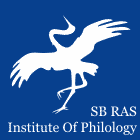 |
|
||||||||||||
|
Institute of Philology of
the Siberian Branch of Russian Academy of Sciences |
|
||||||||||||
|
|||||||||||||
DOI: 10.25205/2410-7883 Roskomnadzor certificate number Эл № ФС 77-84792 | |
| Syuzhetologiya i Syuzhetografiya | |
|
Article
Authors: Gennadii S. Zharnikov The Gorky Institute of World Literature of the Russian Academy of Sciences, Moscow, Russian Federation In the section Literary Life of the Plot
Abstract: The article provides a comprehensive analysis of the image of Pan Apolek, one of the key characters of Isaac Babel’s cycle “Red Cavalry”. Despite the extensive research tradition, which has studied the Western European cultural layers that form this image, its deep connections with Yiddish folklore culture remain understudied. The scientific novelty of the present work lies in the attempt to identify a fundamental stratum in the structure of the image, dating back to the figure of the Yiddish folk hero Hershele Ostropoler. The main methodological tool used is a comparative analysis of the story “Pan Apolek” and Babel’s early short story “Shabos-nahamu”, which is an artistic treatment of the story about Hershele. The study proves that the structural and fabula similarity of these texts is not accidental: Babel consciously transfers the model of behavior and philosophical attitudes of the Yiddish knave to his Polish artist. The article examines in detail the motifs and concepts common to both characters. It analyzes the bodily organization of the characters based on the opposition of the “small” body (the galut type) and the opposing “big” body of the hostile world, which actualizes the mythological model of “David versus Goliath”. The strategy of knavery is studied as the main weapon of the weak, which allows not only to survive, but also to win. Particular attention is paid to the transformation of the function of consolation: while in the story of Herschel it is placed at the level of the title and addressed to the reader, in “Pan Apolek” it becomes the central plot-forming element, manifesting itself in acts of artistic transformation of reality. In addition, the motifs of fun, laughter and artistry, which are constant for both characters, are analyzed, and Babel elevates them to the rank of philosophical principles of a wise attitude to existence. The conclusion of the article shows that Pan Apolek is a complex cultural symbiosis. His European shell hides the Yiddish core, which goes back to the archetype of the luftmensch and the trickster. Thus, in the figure of the ideal artist, Babel synthesizes Ashkenazi life philosophy with the canons of European art, creating a unique image that is key to understanding the writer’s entire aesthetic system. Keywords: Isaac Babel, Red Cavalry, Pan Apolek, Hershele Ostropoler, Yiddish folklore, trickster, Luftmensch, archetype, comparative analysis Bibliography: Pirozhkova A. N. Ya pytayus’ vosstanovit’ cherty: O Babele – i ne tol’ko o nem. [I’m trying to reconstruct the lines. About Babel and not just Babel]. Moscow, AST Publ., 2013, 605 p. (in Russ.) Sicher E. Shabos-nakhamu v Petrograde: Babel’ i Sholom-Aleykhem [Shabos-nahamu in Petrograd. Babel and Sholem Aleichem]. In: Isaak Babel’ v istoricheskom i literaturnom kontekste: XXI vek [Isaac Babel in historical and literary context, the 21st century]. Moscow, Knizhniki Publ., Literaturnyi muzei Publ., 2016, pp. 452–473. (in Russ.) Slezkin Yu. Era Merkuriya: Evrei v sovremennom mire [The Jewish Century]. Moscow, Novoe literaturnoe obozrenie Publ., 2005, 544 p. (in Russ.) Vayskopf M. Mezhdu ognennykh sten. Kniga o Isaake Babele [Between walls of fire. Book about Isaac Babel]. Moscow, Knizhniki Publ., 2017, 494 p. (in Russ.) |
 |
Institute of Philology Nikolaeva st., 8, Novosibirsk, 630090, Russian Federation +7-383-330-15-18, ifl@philology.nsc.ru |
© Institute of Philology |


